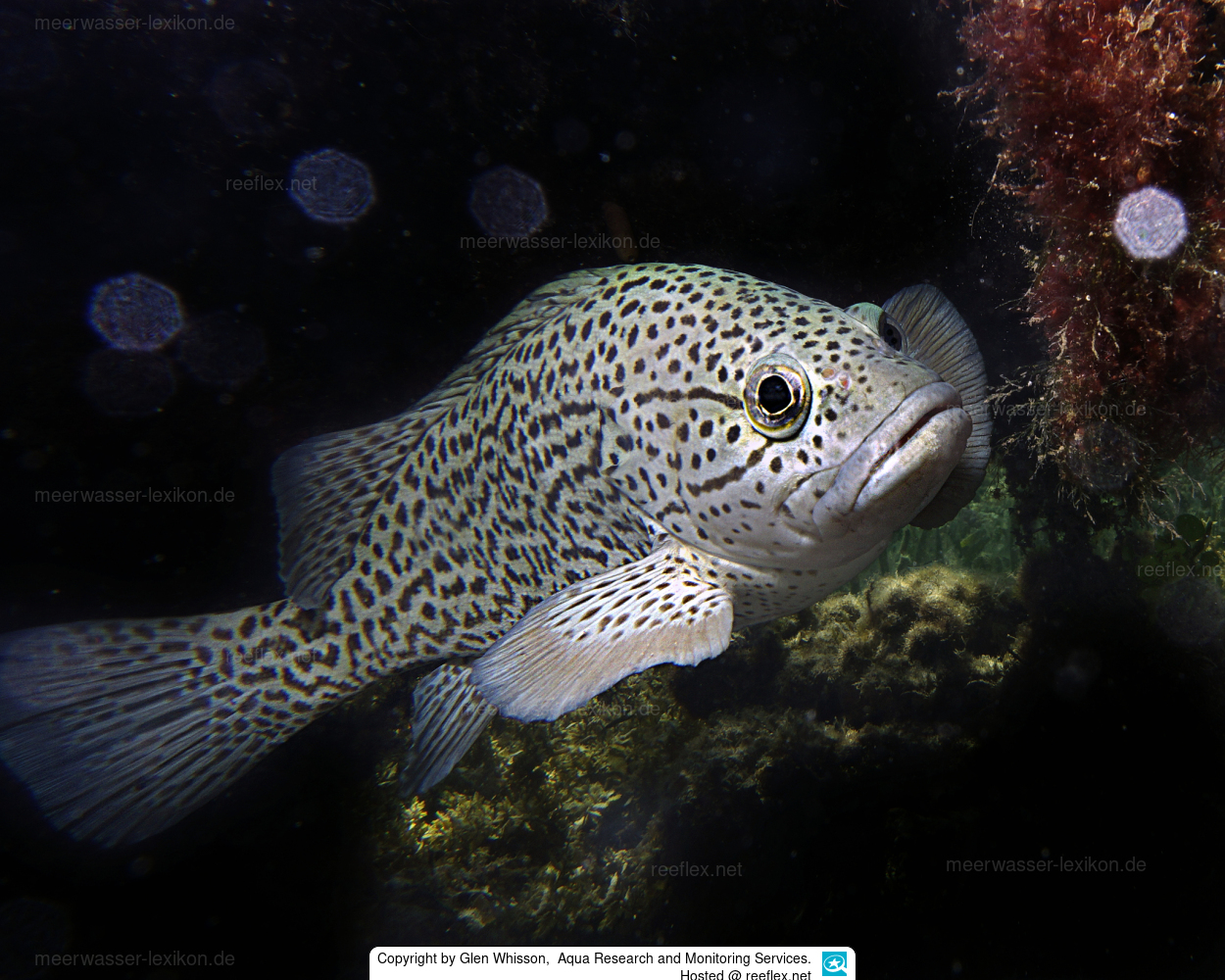Info
Acanthistius pardalotus Hutchins, 1981
The Sawfish Acanthistius pardalotus is a pale gray-green sawfish with a leopard-like pattern of dark spots and lines that become more complex with age. The spots on the fins are somewhat paler with gray-blue, unspotted fin margins and usually 2 - 3 dark, narrow bars extending from the posterior half of the eyes.
Juveniles live in shallow coastal reefs, including tide pools, adults are found in deeper reefs and often stay in burrows during the day.
The Leopard Wirrah differs from the Western Wirrah, Acanthistius serratus, also found in Western Australia, in having fewer vertical scale rows above the lateral line (99 -105 compared to 110 -137 in A. serratus) and stronger serrations on the scales, producing a coarser feel than Acanthistius serratus.
Exact information on the feeding range of this species is not known, but it is likely to be similar to that of other sawfishes.
The specific name comes from the Greek, "pardalotus (= spotted like a leopard) and refers to the characteristic color pattern of this species.
The Sawfish Acanthistius pardalotus is a pale gray-green sawfish with a leopard-like pattern of dark spots and lines that become more complex with age. The spots on the fins are somewhat paler with gray-blue, unspotted fin margins and usually 2 - 3 dark, narrow bars extending from the posterior half of the eyes.
Juveniles live in shallow coastal reefs, including tide pools, adults are found in deeper reefs and often stay in burrows during the day.
The Leopard Wirrah differs from the Western Wirrah, Acanthistius serratus, also found in Western Australia, in having fewer vertical scale rows above the lateral line (99 -105 compared to 110 -137 in A. serratus) and stronger serrations on the scales, producing a coarser feel than Acanthistius serratus.
Exact information on the feeding range of this species is not known, but it is likely to be similar to that of other sawfishes.
The specific name comes from the Greek, "pardalotus (= spotted like a leopard) and refers to the characteristic color pattern of this species.







 Dr. Glen Whisson, Aqua Research and Monitoring Services, Australien
Dr. Glen Whisson, Aqua Research and Monitoring Services, Australien







